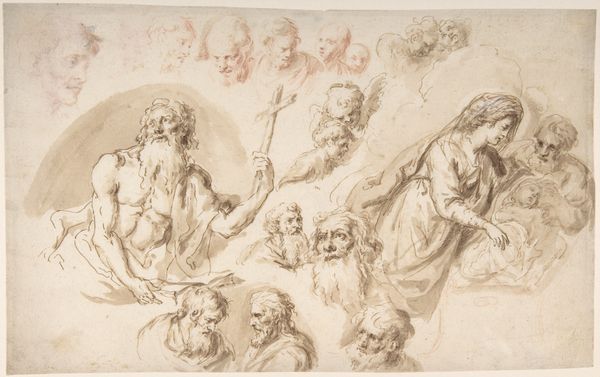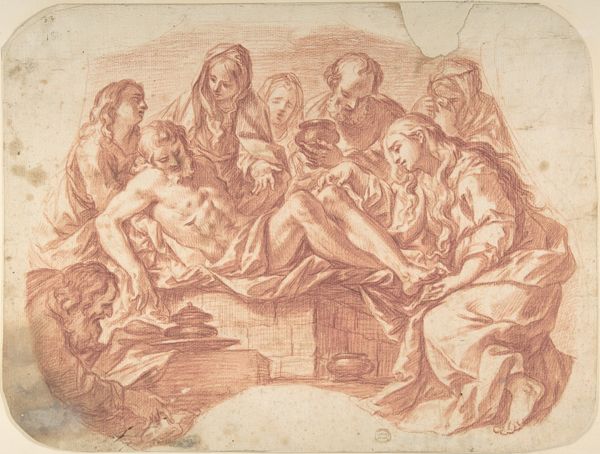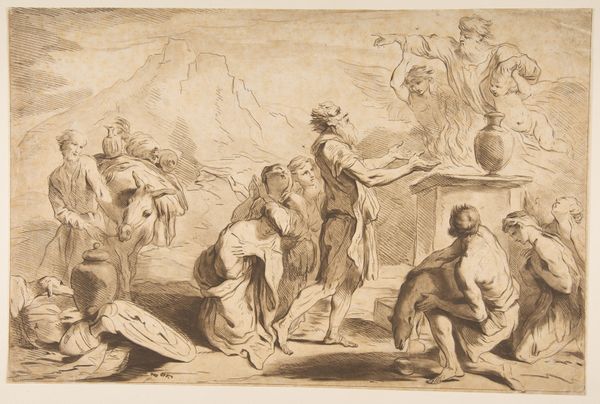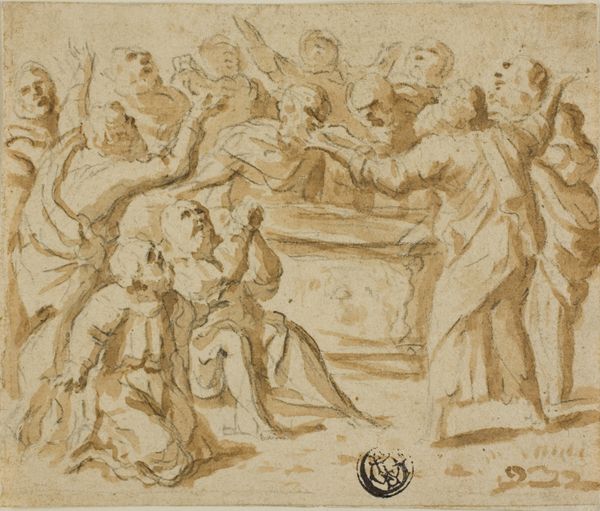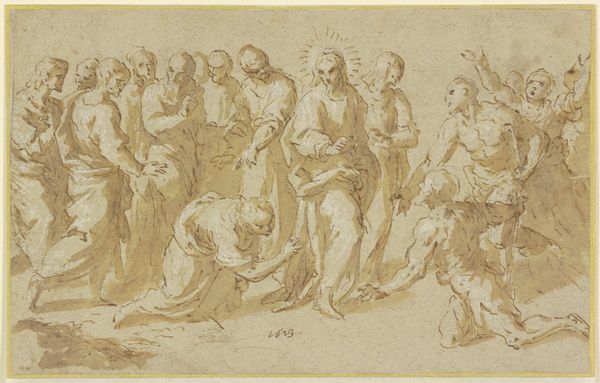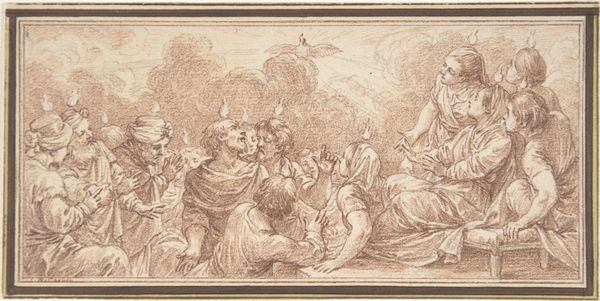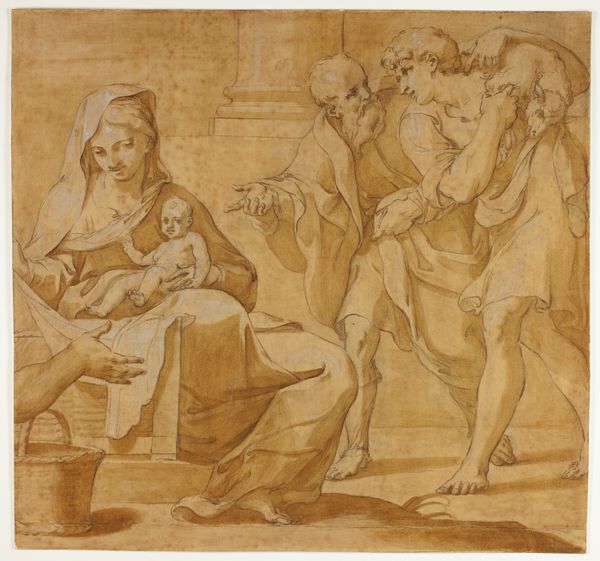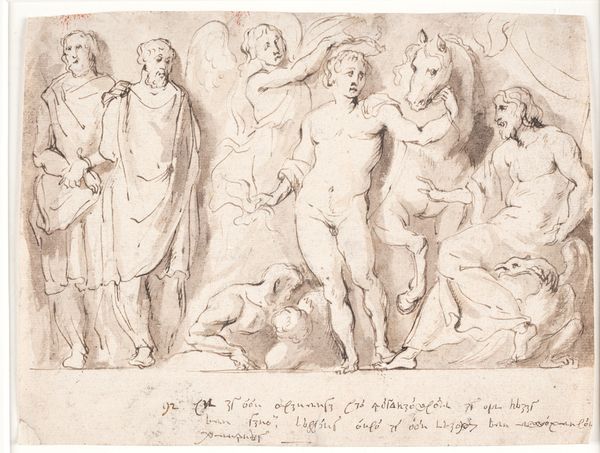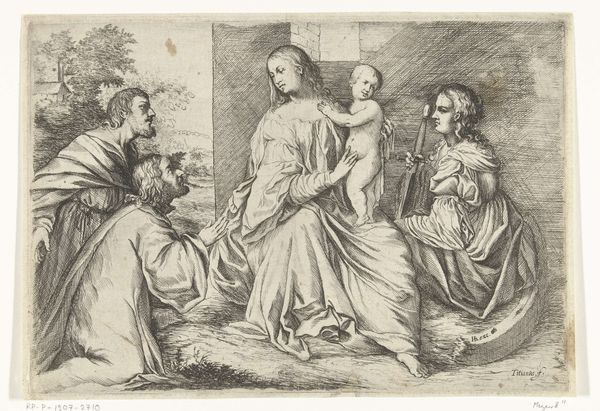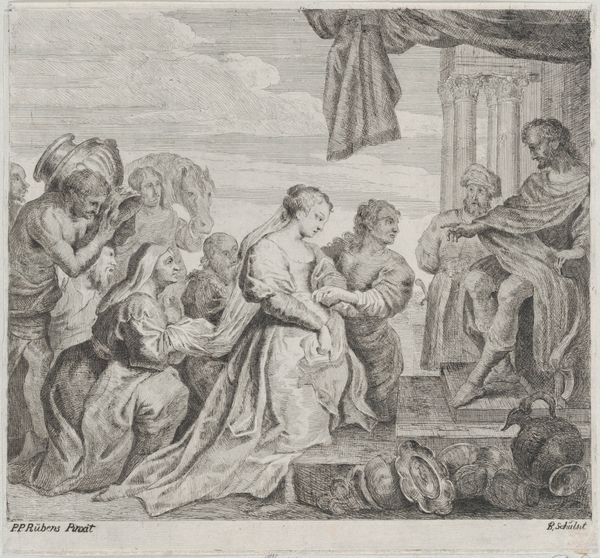
drawing, print, paper, ink
#
portrait
#
drawing
#
narrative-art
#
baroque
# print
#
pencil sketch
#
charcoal drawing
#
figuration
#
paper
#
ink
#
pencil drawing
#
portrait drawing
#
watercolour illustration
#
history-painting
#
academic-art
Dimensions: 224 × 292 mm
Copyright: Public Domain
Editor: So, this is Domenico Piola’s "Suffer the Little Children," dating from around 1690 to 1700. It’s rendered in ink on paper. The sepia tones and soft lines give it a very dreamlike quality. I’m curious, what formal elements strike you most in this composition? Curator: I’m immediately drawn to the artist’s control of line and the distribution of tonal values to guide the viewer’s eye. Notice how the concentration of detail around the central figures, Christ and the child, contrasts with the more loosely rendered background figures. The artist uses this contrast to emphasize the thematic core of the piece, effectively creating a focal point through purely formal means. Editor: That's a really interesting point. I was so caught up in the story, I didn't really think about how the composition directed me. But looking again, that central triangle formed by their gazes is undeniable. Curator: Precisely. Piola has arranged the figures and modulated the light in a deliberate fashion, thus building layers of semiotic information within his narrative painting. Editor: How would you say the academic style influences the reading of this image? Curator: Notice the idealized, almost sculptural treatment of the bodies, especially that of Christ. This emphasis reflects a deep engagement with classical forms and proportions. This visual language elevates the scene, conferring a sense of timeless importance and suggesting the immutable truth of the subject. Does that shift your understanding at all? Editor: It does! I can see how Piola blended emotion and intellect in his composition. Curator: Absolutely. His adept use of Baroque compositional devices and academic form infuses his narrative with increased depth and meaning. Editor: Thanks, that’s given me a lot to think about. Curator: My pleasure. Remember that a deep reading of form yields greater access to meaning.
Comments
No comments
Be the first to comment and join the conversation on the ultimate creative platform.
